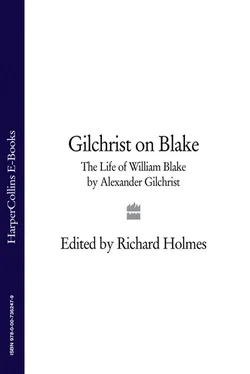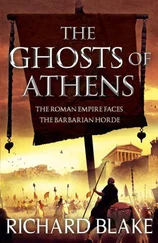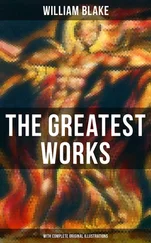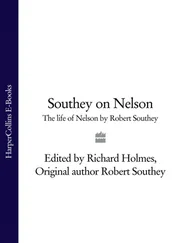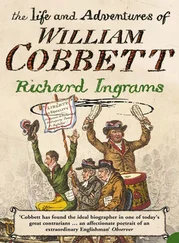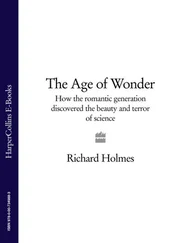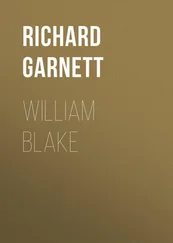Gilchrist on Blake
Life of William Blake Pictor Ignotus
by
EDITED WITH AN INTRODUCTION BY
RICHARD HOLMES

I assert, for myself, that I do not behold the outward creation, and that to me it is hindrance and not action. ‘What!’ it will be questioned, ‘when the sun rises, do you not see a round disc of fire somewhat like a guinea?’ Oh! no, no! I see an innumerable company of the heavenly host crying ‘Holy, holy, holy is the Lord God Almighty!’ I question not my corporeal eye any more than I would question a window concerning a sight. I look through it, and not with it.
BLAKE.— A Vision of the Last Judgment.
Cover Page
Title Page Gilchrist on Blake Life of William Blake Pictor Ignotus by
Epigraph I assert, for myself, that I do not behold the outward creation, and that to me it is hindrance and not action. ‘What!’ it will be questioned, ‘when the sun rises, do you not see a round disc of fire somewhat like a guinea?’ Oh! no, no! I see an innumerable company of the heavenly host crying ‘Holy, holy, holy is the Lord God Almighty!’ I question not my corporeal eye any more than I would question a window concerning a sight. I look through it, and not with it. BLAKE.— A Vision of the Last Judgment.
Introduction
Select Chronology
One Preliminary
Two Childhood, 1757-71
Three Engraver’s Apprentice 1771-78 [ÆT. 14-21]
Four A Boy’s Poems 1768-77 [ÆT. 11-20]
Five Student and Lover 1778-82 [ÆT. 21-25]
Six Introduction to the Polite World 1782-84 [ÆT. 24-27]
Seven Struggle and Sorrow 1782-87 [ÆT. 25-30]
Eight Meditation: Notes on Lavater 1788 [ÆT. 30-31]
Nine Poems of Manhood 1788-89 [ÆT. 31-32]
Ten Books of Prophecy 1789-90 [ÆT. 32-33]
Eleven Bookseller Johnson’s 1791-92 [ÆT. 34-35]
Twelve The Gates of Paradise, America, ETC. 1793 [ÆT. 36]
Thirteen The Songs of Experience 1794 [ÆT. 37]
Fourteen Productive Years 1794-95 [ÆT. 37-38]
Fifteen At Work for the Publishers 1795-99 [ÆT. 38-42]
Sixteen A New Life 1799-1800 [ÆT. 42-43]
Seventeen Poet Hayley and Felpham 1800-1801 [ÆT. 43-44]
Eighteen Working Hours 1801-3 [ÆT. 44-46]
Nineteen Trial for High Treason 1803-4 [ÆT. 46-47]
Twenty Adieu to Felpham 1804 [ÆT. 47]
Twenty-One South Molton Street 1804 [ÆT. 47]
Twenty-Two A Keen Employer 1805-7 [ÆT. 48-50]
Twenty-Three Gleams of Patronage 1806-1808 [ÆT. 49-51]
Twenty-Four The Designs to Blair 1804-8 [ÆT. 47-51]
Twenty-Five Appeal to the Public 1808-10 [ÆT. 51-53]
Twenty-Six Engraver Cromek 1807-1812 [ÆT. 50-55]
Twenty-Seven Years of Deepening Neglect 1810-17 [ÆT. 53-60]
Twenty-Eight John Varley and the Visionary Heads, 1818-20 [ÆT. 61-63.]
Twenty-Nine Opinions: Notes on Reynolds 1820 [ÆT. 63]
Thirty Designs to Phillips’ Pastorals 1820-21 [AElig;T. 63-64]
Thirty-One Fountain Court, 1821-25 [ÆT. 64-68]
Thirty-Two Inventions to the Book of Job 1823-25 [ÆT. 66-68]
Thirty-Three Hampstead; and Youthful Disciples, 1825-27 [ÆT. 68-70]
Thirty-Four Personal Details
Thirty-Five Mad or Not Mad
Thirty-Six Declining Health: Designs to Dante 1824-1827 [ÆT 67-70]
Thirty-Seven Last Days, 1827 [ÆT. 69-70]
Thirty-Eight Posthumous 1827-31
Appendix
Further Reading
Index
Classic Biographies By
Copyright
About the Publisher
When William Blake died in London in 1827, he was already a forgotten man. He had been living in two-room lodgings in Fountain Court, in the Middle Temple, off Fleet Street. His engraved and hand-painted Songs of Innocence and of Experience , had sold less than twenty copies in thirty years. His Prophetic Books had disappeared almost without trace. A single mysterious poem – The Tyger’ – had reached the anthologies. As a poet – once read in manuscript by Coleridge, Wordsworth and Charles Lamb – he was virtually unknown outside a small circle of disciples, a group of young men who pointedly called themselves The Ancients’. Robert Southey, the Poet Laureate, magnanimously dismissed him ‘a man of great, but undoubtedly insane genius’.
As an artist, his reputation was little better. He was chiefly remembered as a one-time commercial engraver of grimly improving texts: Edward Young’s Night Thoughts , Robert Blair’s The Grave , the dark Biblical drama of the Book of Job , and Dante’s Inferno still unfinished at the time of his death. In 1830 Blake was given a short and gently patronizing entry in Alan Cunningham’s Lives of the Most Eminent British Painters. The illuminations to The Songs of Innocence , and the Book of Job , were mildly admired. The Tyger’ was re-printed as an example of fascinating eccentricity.
But Cunningham damned him with faint praise. Blake was a lovable, minor eccentric: unworldly, self-taught and self-deluded. He produced work that was ‘unmeaning, mystical and extravagant’. He was a man ‘overmastered’ by his own imagination. He confused ‘the spiritual for the corporeal vision’. But for the stabilizing influence of his faithful – but ‘illiterate’ – wife Kate, William Blake would be remembered simply as ‘a madman’.
Three years later, in March 1833, the Monthly Magazine wittily celebrated Blake’s lunacies. ‘Blake was an embodied sublimity. He held converse with Michael Angelo, yea with Moses; not in dreams, but in the placid still hour of the night – alone, awake – with such powers as he possessed in their full vigour…He chatted with Cleopatra, and the Black Prince sat to him for a portrait. He reveled in the past; the gates of the spiritual world were unbarred at his behest, and the great ones of bygone ages, clothed in the flesh they wore on earth, visited his studio.’
Blake was diagnosed as a sufferer of extreme and persistent visual hallucinations, a man who ‘painted from spectres’, and had lost his grasp on reality. ‘His may be deemed the most extraordinary case of spectral illusion that has hitherto occurred. Is it possible that neither Sir Walter Scott, nor Sir David Brewster – the authors of Demonology and Witchcraft and Natural Magic – ever heard of Blake?’
This article had great success, and was copied by the smart Parisian magazine, La Revue Britannique , the following year. The translation was a little hurried, and opened with the assertion that not only was the ‘spectral’ William Blake still alive, but he was actually incarcerated in a London madhouse. The two most celebrated inmates of the madhouse of Bedlam in London are the arsonist Martin, estranged elder brother of the painter John Martin, and William Blake – nicknamed “The Seer”.’
Twenty years after his death, ‘mad’ Blake’s reputation was barely taken seriously at all. A large manuscript collection of his work was offered for private sale by a keeper at the British Museum in 1847. It consisted of a foolscap quarto sketchbook of 58 leaves, packed with Blake’s unpublished poems and drawings. It would now be considered priceless, but then it was sold for a mere ten shillings and sixpence.
The purchaser was Dante Gabriel Rossetti. Vague plans to publish it by the Pre-Raphaelite brotherhood were mooted, and Dante’s brother the critic William Rossetti, expressed an interest. But on examination it was put quietly aside as too difficult and obscure to interest the public. A whole generation had now elapsed, the surviving ‘Ancients’ were indeed growing old, and the memory of ‘mad’ Blake was dwindling to nothing. It is possible that the author of The Tyger’ might have been entirely lost.
Читать дальше
